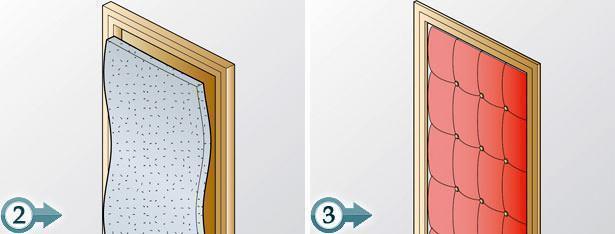Noise control in the room
Post from EditorialsAn extremely important factor to improve the liveableness of the children's room is the control of noise pollution both incoming and outgoing.
Secondly, the child needs to rest and we need to thwart the entrance of the noise in his room.
The techniques to be adopted to limit the noise that come in and that goes out are, in the end, the same, as it is to consider the kids' room like a box with six walls to be made poor noise conductors.
However, in the walls there are some weak points such as doors and windows.
Let's see together how to intervene:

Soundproof windows
 (1) The systems to soundproof the most of the windows are two: to install double glazing and install double exterior windows.
(1) The systems to soundproof the most of the windows are two: to install double glazing and install double exterior windows.
If the two measures are adopted together you get the best results.
In general these are jobs that can not be made by a private but must be entrusted to skilled artisans as some special equipments are needed to assemble the necessary artifacts.
The double windows create a very effective barrier to the transmission of noise.
Soundproof doors
(2) The door of the room of the children can be soundproofed with relative ease even with DIY systems.
You just ha to apply on the inner face a thick layer of polyurethane foam (5 to 8 cm) and secure it to the door with nails then cover it with a fabric often fixed at the edge with nailed trimmings. 
(3) The layer is then locked in several points (as a mattress) from nails to tack with a wide head that can be equipped with headcover fabric.
The set looks like a padded bedspread applied to the door.
Naturally, there should be openings for the lock and you must check that the presence of this additional thickness does not interfere with the opening.
Insulate the floor
The noise transmitted through the floor can be very annoying for the inhabitants of the rooms below: kids jumping, playing and chasing each other produce a noise that is transmitted very clearly. For an appropriate intervention you must first evaluate the type of flooring that you have in the room.
For an appropriate intervention you must first evaluate the type of flooring that you have in the room.
Among the noisiest floors are parquet and ceramics while those with thick carpet or terracotta elements transmit less effectively the noise.
This intervention may consist in applying a thick carpet layed without glue, only with double sided tape, so you can easily remove it and replace it if it becomes dirty or if it triggers allergy problems.
The use of carpets is less indicated, as they have the drawback of creating easy stumbling for the kids, or even slipping and consequent fall if they are not equipped with the specific network that stabilizes them. If the noise is consistent (who has a couple of children who play guitar is well aware) you can take the most effective systems by using special continuous carpets in neoprene material (even thicker than 1 cm) that lie on the floor, suitably shaped as a carpet, without the need of gluing or fastening with tapes as their own weight keeps them well stretched.
If the noise is consistent (who has a couple of children who play guitar is well aware) you can take the most effective systems by using special continuous carpets in neoprene material (even thicker than 1 cm) that lie on the floor, suitably shaped as a carpet, without the need of gluing or fastening with tapes as their own weight keeps them well stretched.
On this carpet you can lay a moquette(4) or you can apply a type of floating floors composed of elements that fit into one another and that are placed without glueing(5).
Insulate the ceiling
Insulate ceilings from the noise is actually quite simple and complex at the same time.
It is easier because you can use lightweight materials and with little resistance because nobody has to walk on it, but the work is complicated by the fact that these elements are suspended with different systems and you have to deal with the chandelier, the paneled windows and other structural elements.
(6) The actions to be performed are essentially of two types: the first, more simple, consists in fixing the panels in sound absorbing material such as polystyrene, polyurethane foam, etc..
On the market there are panels with exposed face aesthetically valid, finished as drawers, slats (etc.) in different colors.
The application is carried out with special mastics adhesives even if, in general, it is useful to employ other fasteners such as plugs, tracks, etc..
(7) The second system is, from the point of view of phonic insulation, definitely more effective.
It is to build a ceiling far from the original one from 10 to 50 cm depending on the height of the room and the limits imposed by its structure.
A standard countertop is made with a frame suspended from the ceiling by steel cables and plugs.
In its structure you insert the cladding panels.
Above the ceiling panels you can place other panels of insulating material (8).
79741 REGISTERED USERS










